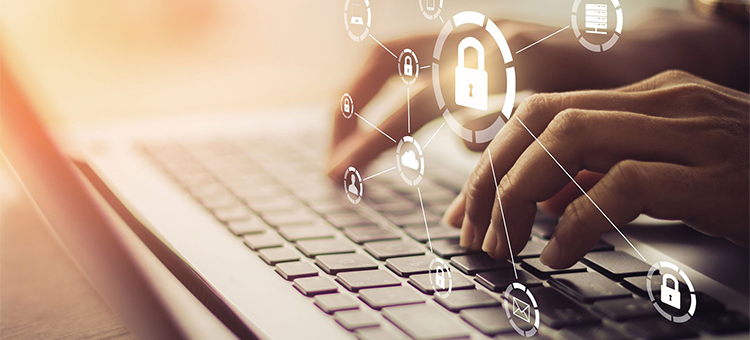c4nUr34d+h!5?… Well, can you? It may not look like it, but that jumble of letters, numbers and symbols spells out a question: Can you read this? Honestly, it doesn’t matter if you can. What matters is whether you will create—and use—something similar when devising your next password.
It’s estimated that the average person has at least 70 password-protected accounts. But, we’re willing to bet those same people have far fewer unique passwords to access them. Although it may seem daunting to think up and remember different and secure passwords for all your accounts, there are strategies and tools to help. In an increasingly digital world, it’s too big of a risk not to make the effort.
Professionally, teams are more dispersed than ever before. As a result, opportunities to connect and work from anywhere abound. But so too do cybersecurity threats. The influx of new ways to innovate and collaborate has exposed businesses of all kinds to security breaches.
But there’s good news. By following a few fundamental password best practices, Kansas City businesses can instantly and significantly improve their security posture. These are our top suggestions.
- Review all your accounts and delete any you no longer use
This rule doesn’t apply only to work-related accounts. Most people use the same few passwords for all accounts, regardless of their purpose. If just one of the websites or apps you use is compromised, that could put you at risk in other places. The smaller your footprint, the less exposure you have and the better off you are.
- Update all your passwords — the longer and more complicated, the better
A good rule of thumb is to update your passwords on a quarterly basis. When you do, make sure they’re unique, complicated, even downright nonsensical. A few basic tips include not capitalizing the first letter—this is habit for many of us, and hackers know it. Also, stay away from the exclamation mark. As the most used symbol, it’s another easy guess for bad actors.
But don’t stop there. Remember c4nUr34d+H!5? (“Can you read this?”)? Consider building your next password using a phrase, but get creative. Play with capitalizations and switch out some letters for numbers and symbols. This’ll make it easier for you to remember but tough for hackers to crack. There’s another method to consider…
8pQ2&PYtkon0. Can you read this? Neither can we. That’s the point. This is the kind of code you’ll receive when you use a password generator. Password generators create random, unique and impossible-to-guess passwords to safeguard your accounts. Of course, they’ll be difficult to remember, but you don’t necessarily have to. That’s what a password manager is for.
- Consider using a password manager
Password managers are incredibly helpful tools. The only password you need to remember is a master one to access your password manager, which will securely store and autofill credentials for all your accounts. Even better, in many instances, you can find one tool that generates and manages all your passwords.
- Employ multi-factor authentication
Multi-factor authentication (MFA) and two-factor authentication (2FA) grant users access only after they successfully present two or more pieces of evidence to the authentication system. For instance, when you go to sign into an online account, you may be asked to type in a passcode sent to your phone before you can proceed.
A lot of websites will give you the option to set up MFA or 2FA. Always opt in. This is an especially effective IT security protocol because it adds another layer of protection. A hacker may have gained your login credentials, but it’s unlikely that they’ll also gain access to your second device or safeguard.
- Check your accounts regularly
Data breaches happen every day. In addition to keeping up with quarterly password updates, it’s important to check your accounts regularly for suspicious activity. If anything seems amiss, don’t wait—change your password immediately. In some instances, businesses whose websites have been breached will notify users, making it easier to be proactive. Additionally, there are tools that will let you know if it seems an account may have been compromised. For instance, under “settings,” and then “passwords,” iPhone users receive security recommendations if it looks like any of your accounts have been breached or are at risk of future breaches.
If you dread updating and remembering your slew of passwords, you’re not alone. It can feel like a tall order. But a strong password is truly your best line of defense against cybersecurity threats. Using the tips and tools above, we hope it’ll be easier than you think.
If you have questions about safeguarding your technology and business, you might find our recent blog post with additional cybersecurity strategies useful. And remember, our team is here to help. For more than 20 years, Invision has provided IT solutions, including outsourced IT support, IT consulting and IT services to businesses throughout the Kansas City metro. From Olathe and Overland Park to Shawnee and Mission to the Plaza, Westport, Independence, Gladstone, and beyond, our team develops tailored solutions to respond to the unique needs of businesses of all types to help them thrive. Contact Invision for more information.




